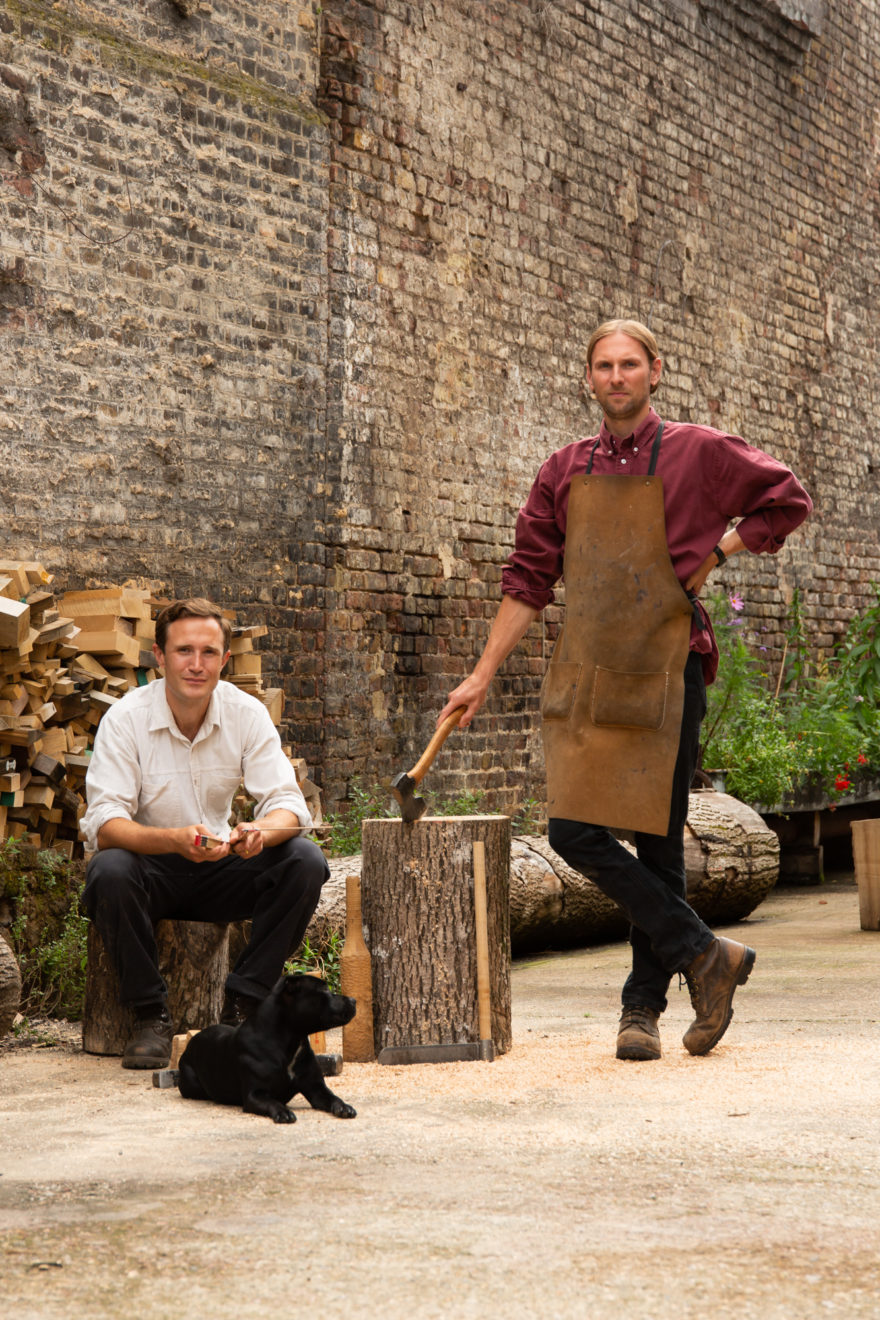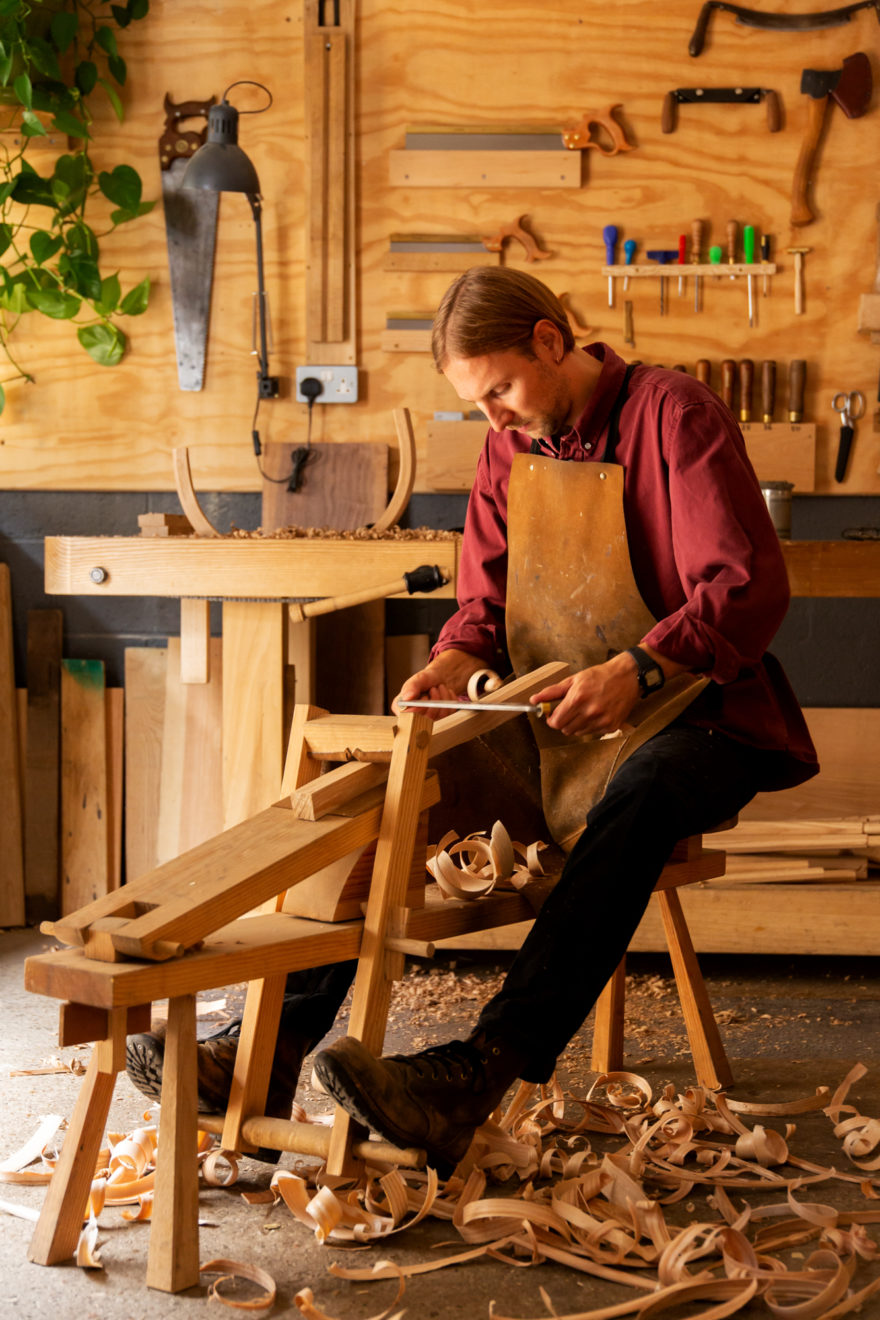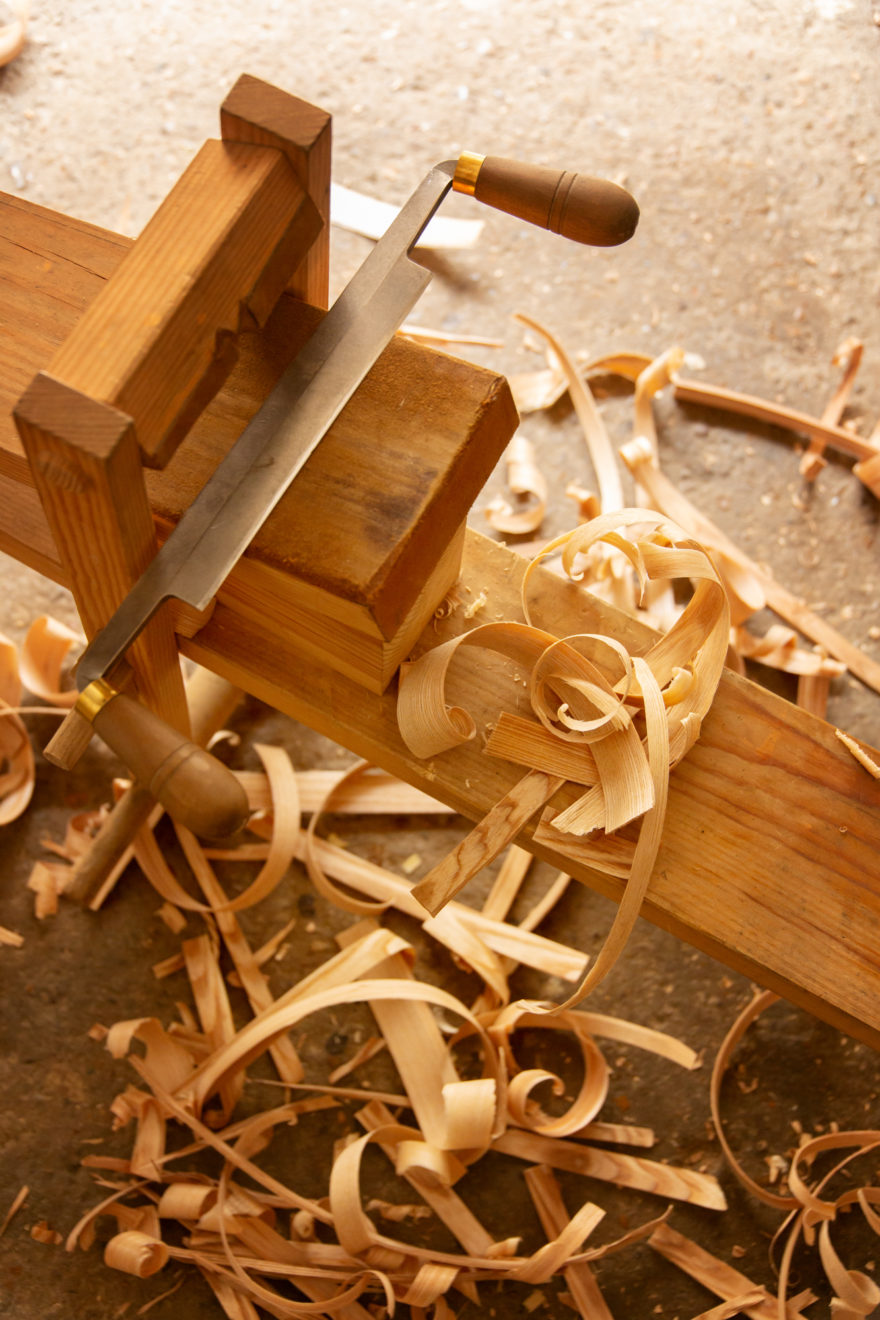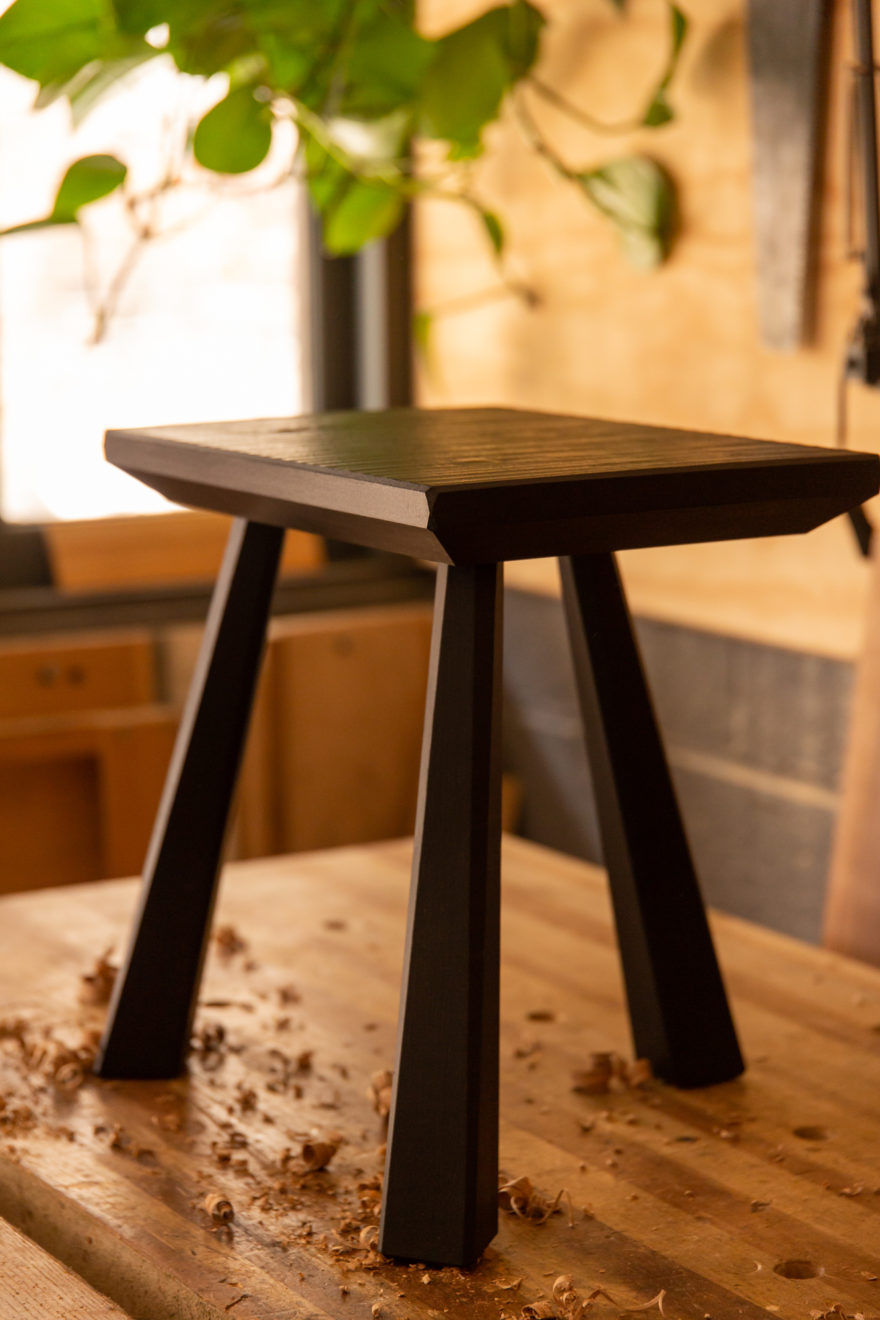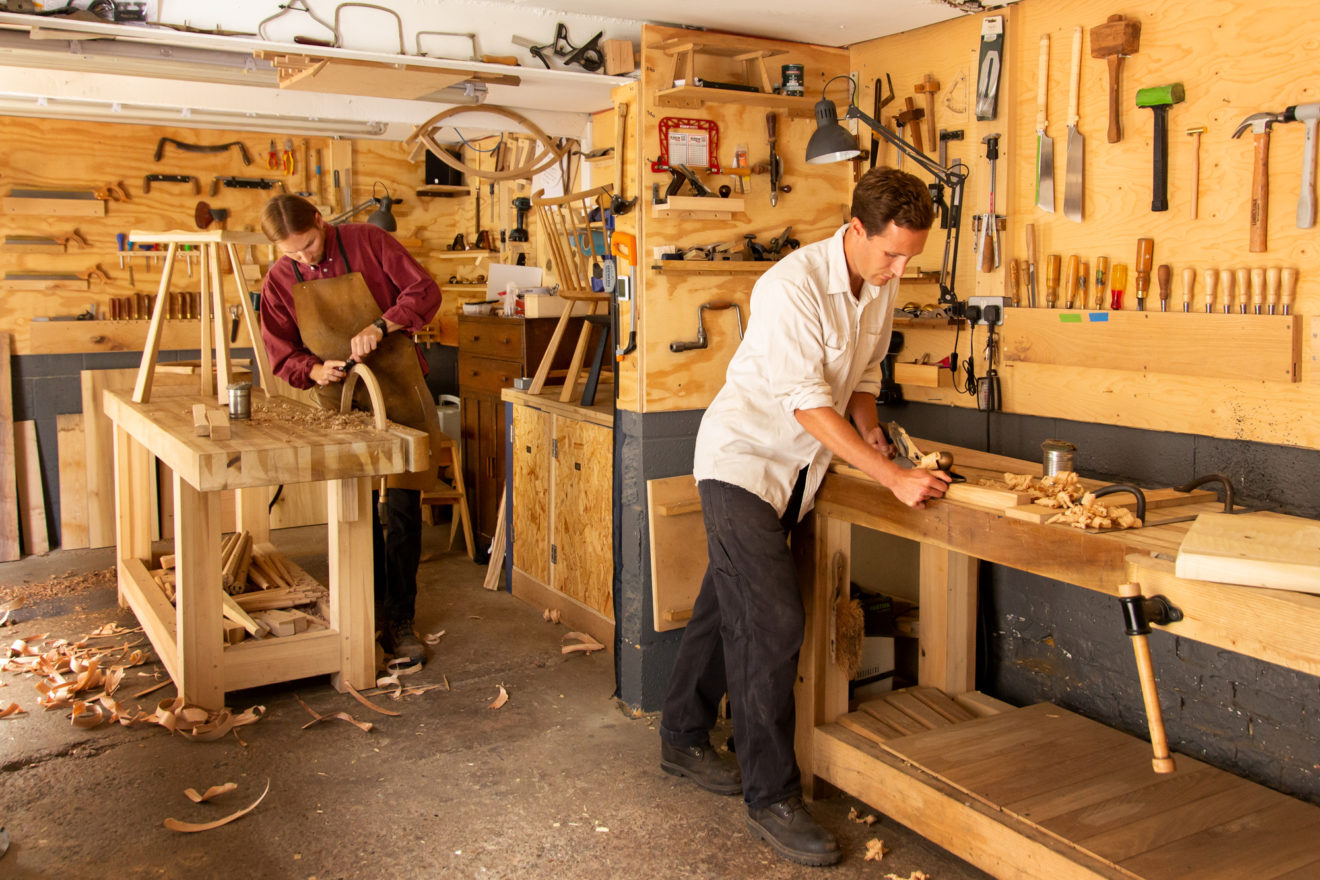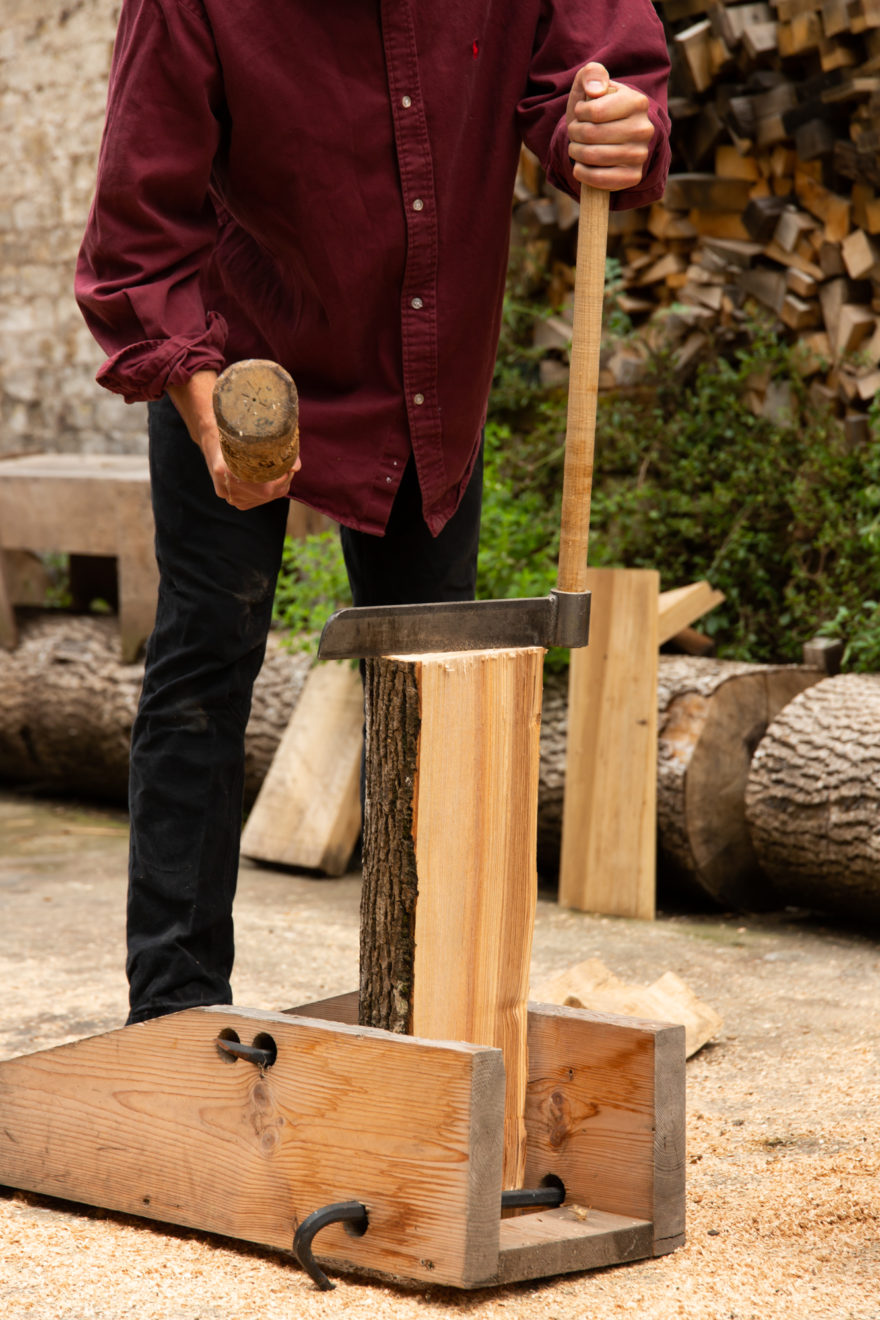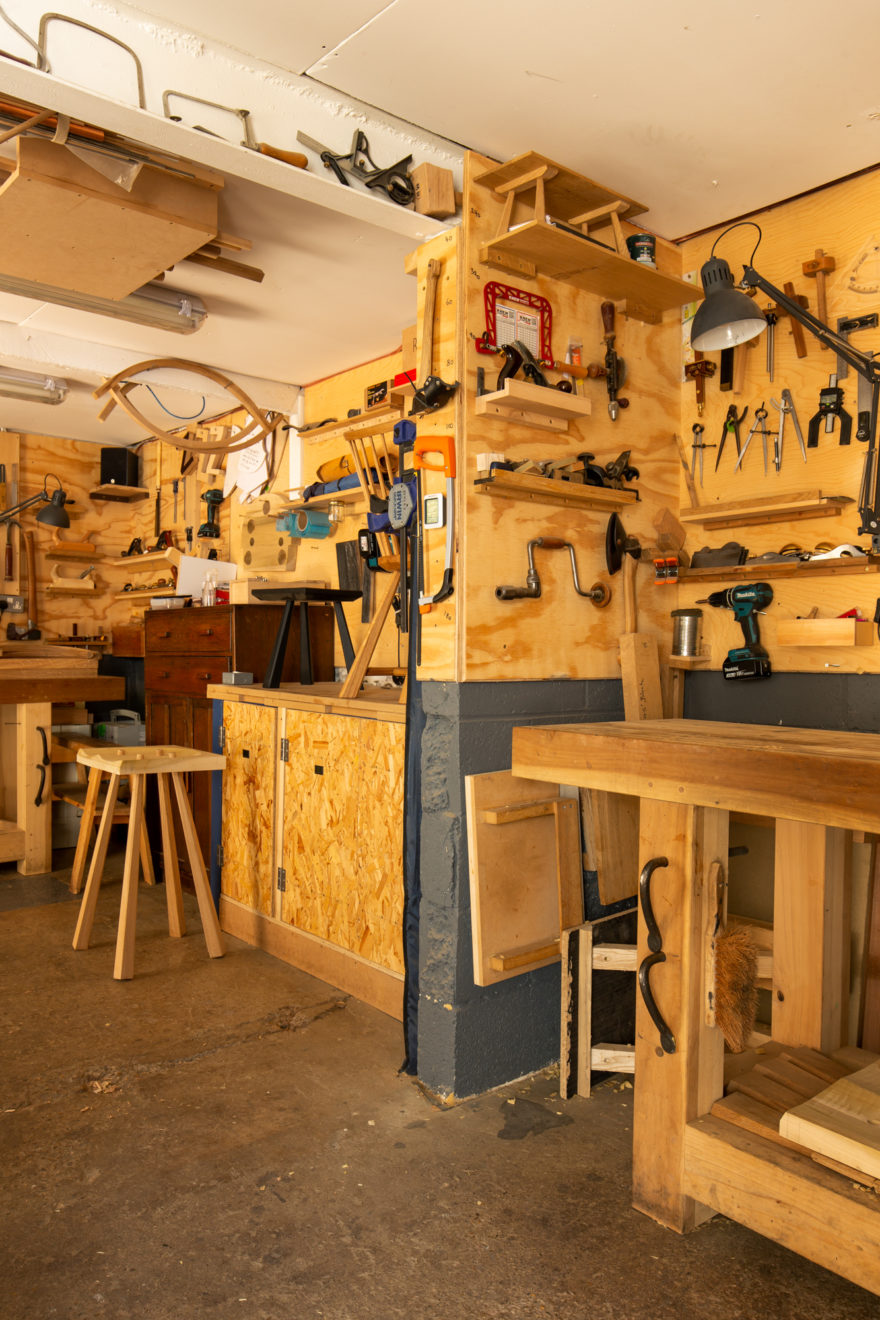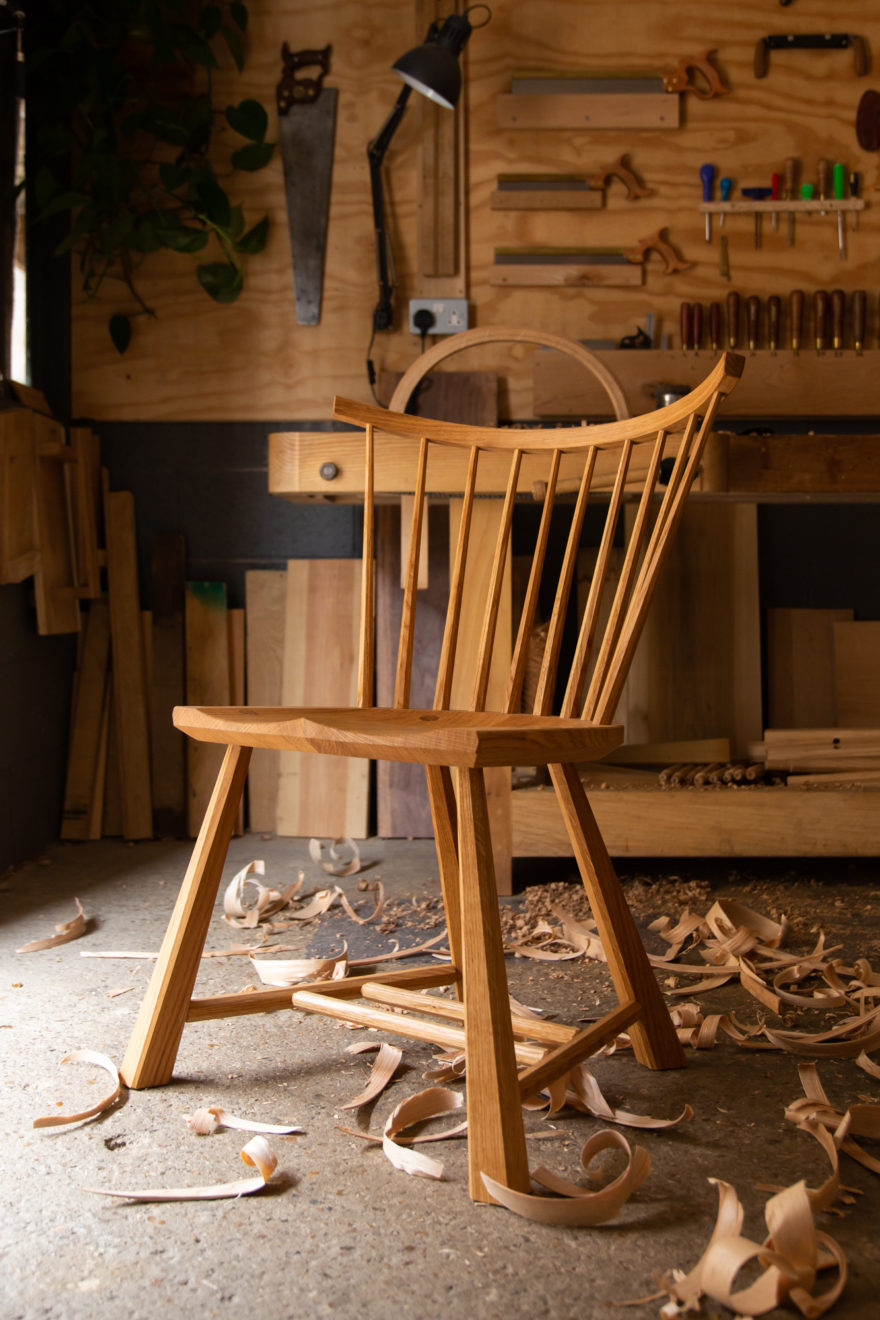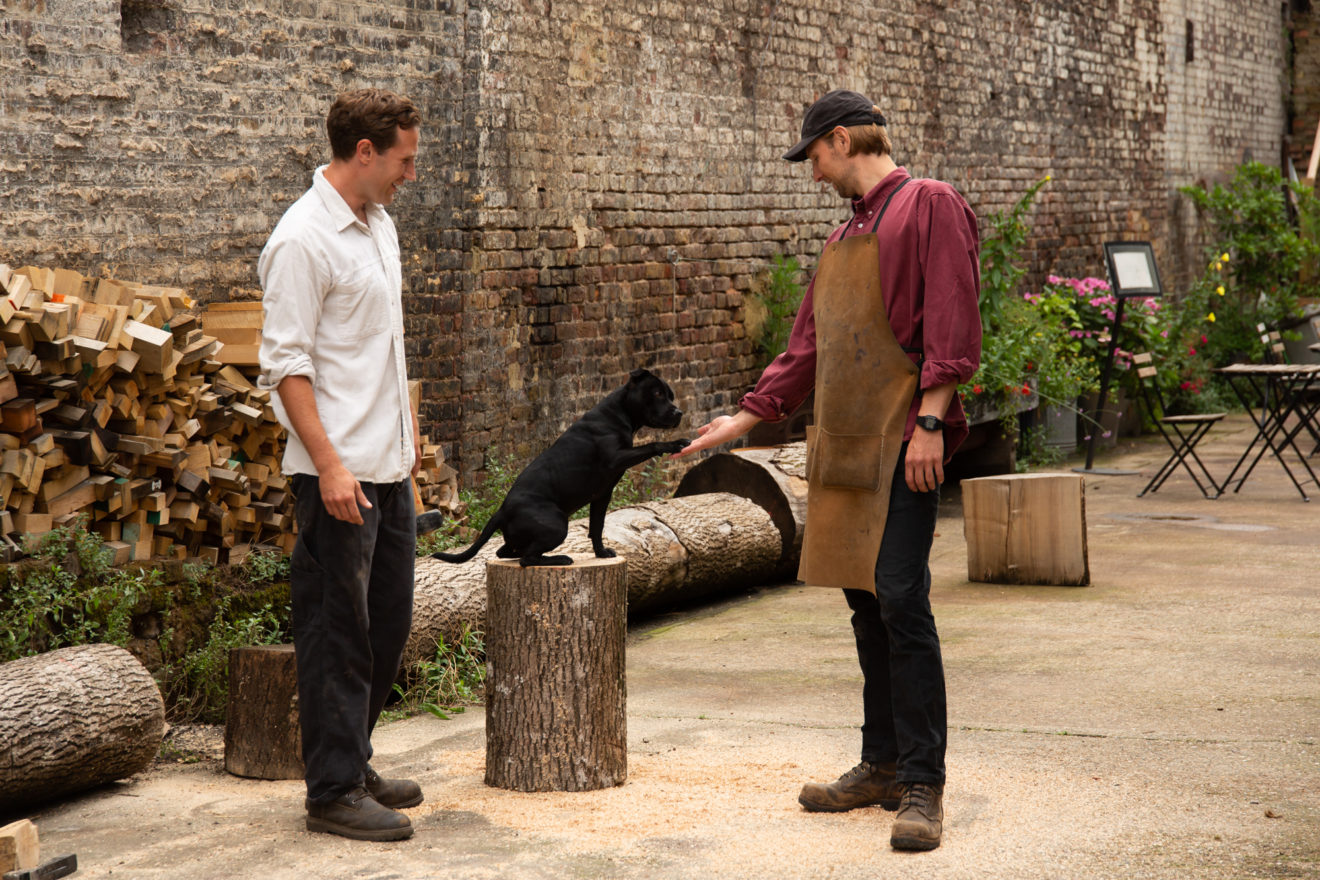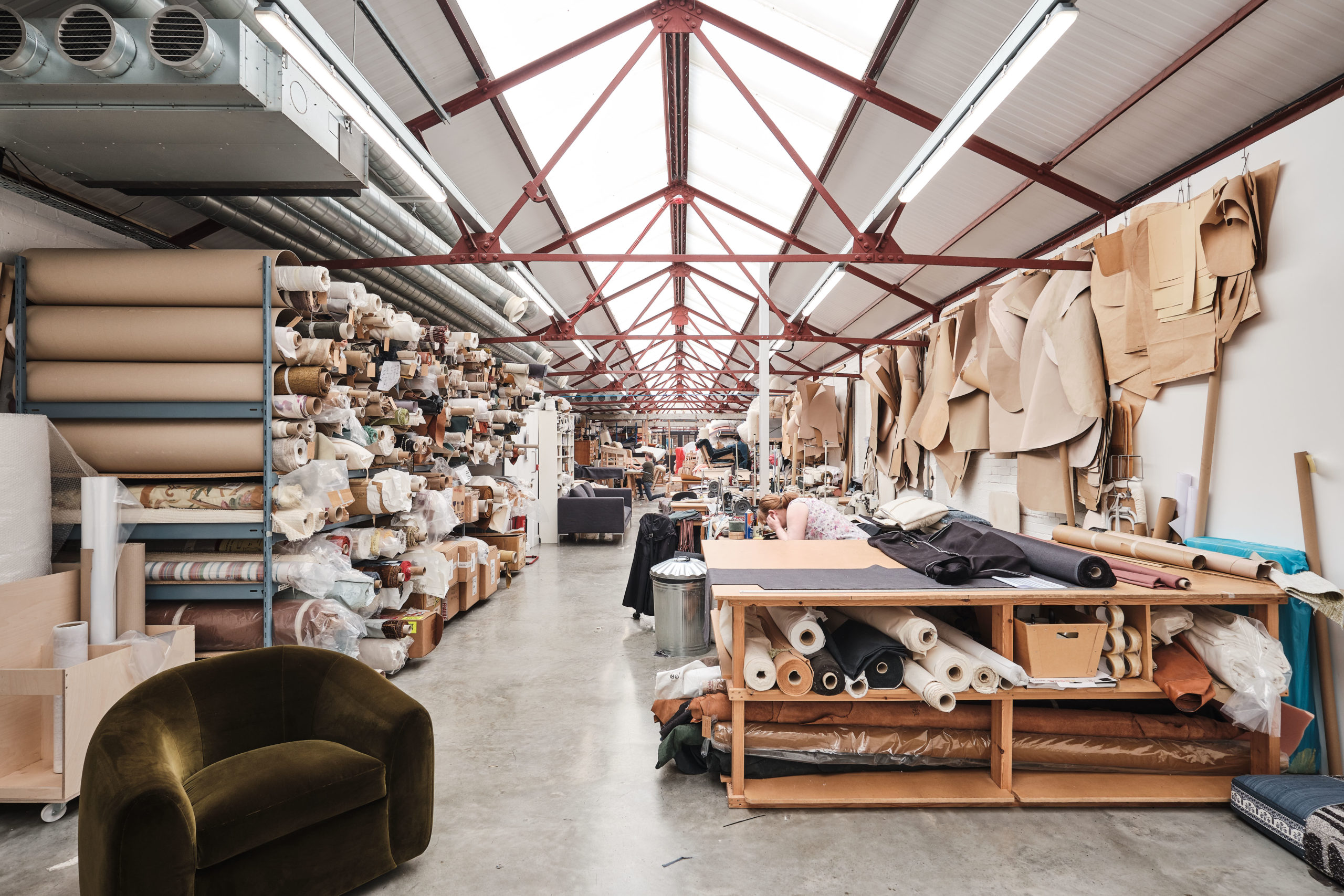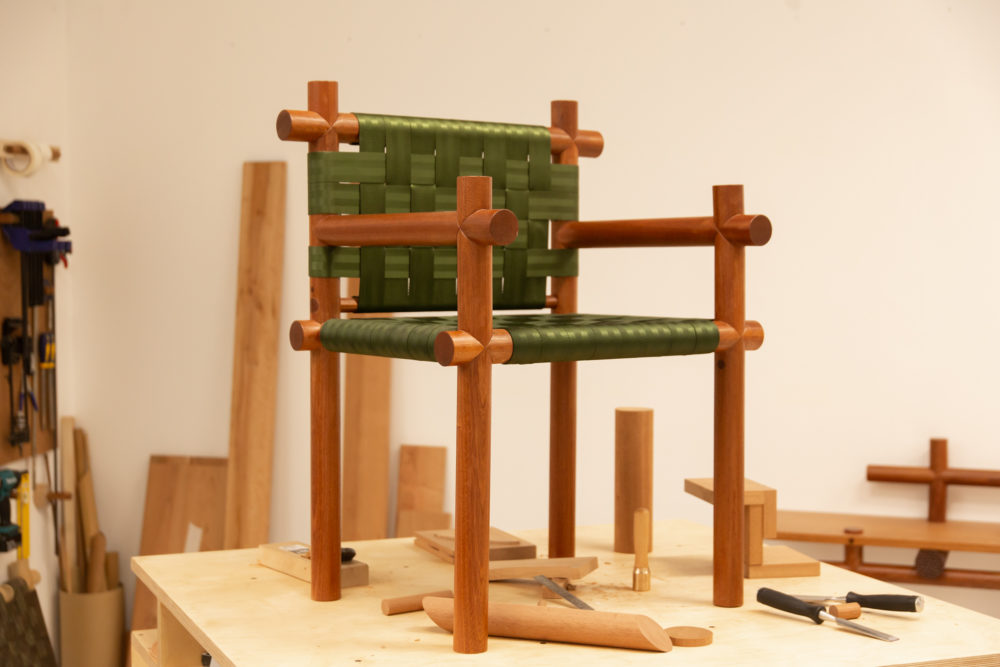Bibbings & Hensby
Jack Bibbings and Matthew Hensby made independent about turns in their lives when they went from working on desks to a training in making them. It’s on that journey that they met and, from there, formed the furniture workshop, Bibbings & Hensby. We chat to the pair about their work, learning why sustainability is innate in everything they do, and how they intend to create tales of the future’s past through their traditional furniture-making techniques.
We both followed very similar paths into furniture making. We both grew up with a passion for making things but ultimately made the decision to follow academic paths into university and then desk jobs. We quite quickly became disillusioned with that world and made the decision in 2017 to enter into formal training in fine woodwork and furniture making.
Jack: When I was a child my father made our dining table and chairs, for me this is what sparked my interest in making things. Seeing the transformation of wooden boards into objects that we could place in the house, use and interact with was, to my mind, absolutely amazing.
Matthew: My fondest memories and proudest moments as a child were the times I spent making things. Whether in the garden or at school, practical activities held my concentration like nothing else. It took me a few years behind a desk to remember this, but eventually I realised making things with my hands was what I should be doing with my time.
It was during our training that we met. We soon realised that we shared a common interest in how to approach furniture making. We gradually started to collaborate on projects while at college but it wasn’t until nearing the end that we started talking seriously about working together.
M: As we approached the end of our training, I was looking around for jobs in the industry that incorporated the traditional hand skills that I wanted to form the basis of my practice as a furniture maker. In the end, it was the absence these opportunities that sparked the conversation between the two of us about the possibility of opening our own workshop.
J: We had a conviction that traditional furniture-making skills and techniques could still remain relevant in a commercial contemporary furniture-making workshop. We simply didn’t see anywhere else where we could continue to develop these skills, so we decided to set up our own workshop to try and make a living by following the principles we were passionate about.
The techniques, tools and materials we work with set certain technical parameters that influence the way we approach design. These are the same parameters small scale furniture makers have been working within for hundreds of years, and it’s by continuing this tradition that we approach our work. Often our design inspiration will come from studying these historic pieces – in particular vernacular furniture – which is characterised by a functional simplicity that we really admire. Our work shares these principles, but while tradition plays a fundamentally important role in directing our work, we approach design very much from a contemporary perspective. Our designs do visually reference the traditions that have inspired them but we don’t simply make reproductions – our work is a continuation of those traditions but made to appeal to contemporary design sensibilities.
Intuition and engineering varies from piece to piece. The designs of our chairs are very intuition-led and have evolved over time, while for our bespoke pieces – like cabinets and tables – it’s a much more refined and exacting process before we start making them through drawings. These drawings not only allow for the technical challenges of the construction to be reconciled but, equally, aid the conversations we have with our clients as we design the piece. Added to this, often the character of the timber comes to have a significant bearing on how a piece comes to life. We are currently making a corner desk for a client who wants to celebrate the natural shape of the tree from which it is being made. Much of the character of that piece is being influenced by the uniqueness of the Scottish elm tree that we have sourced specifically for them and the shape of the room it is destined to live in.
The vernacular furniture we admire is seldom attributed to a specific individual but these unknown craftspeople are a constant source of inspiration and admiration for us. While their work offers very little information about them as individuals, close inspection reveals a richness of information about them as makers. The tools they used, the choices they made about design and construction, the mistakes they made, the importance they attributed to strength or neatness, whether their plane blade was sharp or chipped, and much more. These visual messages from the past imbue handmade furniture with so much meaning and warmth that is absent in the manufactured furniture of our own time. Hopefully people of the future will look over our work in the same way as we do work of the past and appreciate the clues we leave behind in the same way.
And, there are of course also many known craftspeople and designers that we highly admire, like craft pioneer George Nakashima, Welsh chair maker John Brown and his contemporary successor Chris Williams, modernist Swedish designer Axel Einar Hjorth, and architect/designers Gio Ponti and Kaare Klint.
We recent collaborated with a stonemason to produce a timber/limestone table which turned out to be a very enjoyable process – this is something we’d like to do more often. We have found that working with, and learning from, other skilled craftspeople is a very rewarding process and we’d love to see more of our work incorporate other natural materials through collaborations like this.
We highly admire the work of the chair maker Chris Williams. Chris continues the long and uniquely Welsh tradition of stick chair making. Welsh stick chairs have long been made by local craftspeople from wood found growing in hedgerows and woodlands, with their natural character determining the shape of the chair. This means that no two Welsh stick chairs are the same. Chris continues celebrating the idiosyncrasies that arise from this approach while working from no set plans, and continues to evolve the form to the present day. We find his chairs and approach to the craft truly inspirational.
Sustainability is a fundamental objective for what we do. Timber is the most sustainable building material there is and we think that making furniture directly from the trees around us is a fantastically sustainable way to work. Wherever possible we allow the principle of sustainability to guide the working practices we adopt and the materials we use. Whether that’s focusing on locally grown timber, incorporating the use of green wood, prioritising hand tools over powered tools, avoiding the use of sandpaper, or using natural glues and finishes; we are continually assessing each element of our work with sustainability in mind.
Often, for our seated furniture, we use trees that we selectively fell from local, sustainably managed woodlands. We then take each tree back to the workshop in log form where we split them open with wedges before shaping them into components by hand. We then bag up all the shavings and hand them over to a local community of chefs, florists and growers who use them in their gardens. As these trees are often destined for firewood, it’s nice to be able to utilise the material for furniture making.
We very much enjoy being based in London. From a practical point of view it’s great, as a lot of our clients are based here so we can easily be on hand to discuss projects, show them around the workshop and give them a good feel for how we approach our work. It’s also nice being based at our current workshop collective in East London, Hone, where there’s a thriving community of makers. It’s great to be around so may other craftspeople, especially when you need to borrow extra clamps!
Often the biggest challenge we face is finding enough time to run our business, complete commissions, and continue to develop and make new speculative designs. It’s a balancing act but one thing is for sure, we’re never short of things to do.
We have a number of projects coming up that we’re really excited by, including a collaboration with a prominent designer on some large-scale pieces for a Central London hotel, and a collection of work for an architect we really admire. As well as a nice variety of orders for private clients and the numerous speculative pieces waiting to be made.

